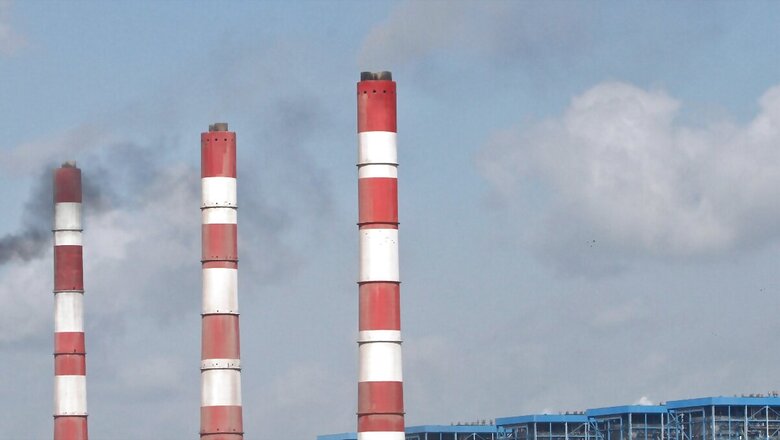
views
A state-level analysis by the Centre for Science and Environment (CSE) on compliance with sulphur dioxide emission norms by thermal plants across the country throws up alarming indications of feet-dragging by the sector.
At present, only 5% of thermal capacity meets the norms. Thermal plants in all the eastern states are non-compliant. Very few in the remaining regions are meeting the norms, says the analysis.
The CSE analysis is based on the updated Flue Gas Desulfurization (FGD) status released by the Central Electricity Authority (CEA).
“The Ministry of Environment, Forest and Climate Change (MoEFCC) had issued a notification specifying the emission norms for coal-based power plants way back in December 2015. Since then, the norms have been diluted for several parameters and deadlines delayed,” said programme director, industrial pollution unit, CSE Nivit Yadav.
According to the CSE analysis, the 5% of plants that have so far installed FGDs for controlling SO2 emissions include 9,280 MW that have been reported to have commissioned FGDs and another 1,430 MW that “claim to be SO2 compliant”.
“We have found that despite five to eight years of extensions in deadlines, 43% of the capacity (Category A, which includes plants within 10 km radius of Delhi-NCR or cities with million-plus population); 11% of the capacity (Category B — within 10 km radius of critically polluted areas); and 1% of the remaining capacity (Category C) are unlikely to meet the norms by the latest deadlines of 2024, 2025 and 2026, respectively,” said CSE programme officer, industrial pollution unit Anubha Aggarwal.
But a comparison of the likelihood of compliance between December 2021 and now shows that there has been an improvement. This can primarily be attributed to an extension in deadlines by another two years, combined with increased clarity for another 34 GW capacity, about which CEA had not been reporting until December 2021.
None of the states in the eastern region — Bihar, West Bengal, Odisha, Assam, and Jharkhand — have any thermal power plants (TPPs) that are at present complying with the emission norms. Although, apart from West Bengal, TPPs in all other states in this region are likely to meet the norms by their respective deadlines.
All states in Western Region — Chhattisgarh, Gujarat, Madhya Pradesh and Maharashtra — have some TPPs that are complying with the SO2.
The states and locations in the Northern Region are Delhi-NCR, Haryana, Punjab, Rajasthan and Uttar Pradesh. The Dadri TPP and Unchhar TPS in Uttar Pradesh and the Mahatma Gandhi TPP in Haryana (cumulative capacity of 3,150 MW) are the only plants in the northern region that are complying with the norms.
Also, 1,025 MW capacity in Punjab and Uttar Pradesh is at a very initial stage of compliance. In case of Uttar Pradesh and Rajasthan, 6,440 MW capacity was commissioned after January 1, 2017, two years after the enforcement of the emission norms, yet these plants are not complying with the norms.
In case of Delhi and the National Capital Region (NCR), 10,075 MW is likely to comply with the norms.
In the Southern Region, Karnataka, which had reported zero compliance in the December 2021 CEA status report, 260 MW now claims to be SO2, in Tamil Nadu and Andhra Pradesh, there is a substantial increase in the capacity that is likely to meet the norms.



















Comments
0 comment